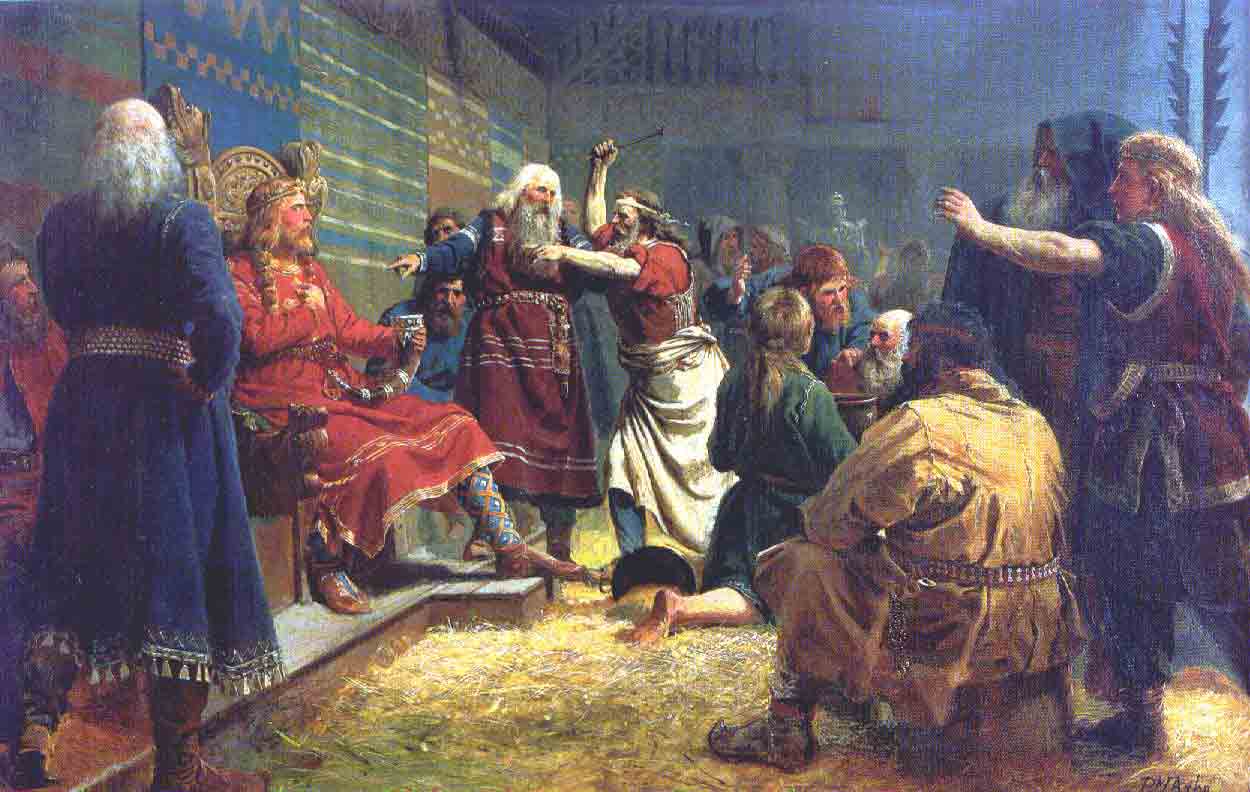
Håkon den Gode i juleblótet på Mære, malt av Peter-Nicolai Arbo
Freyr’s sacred animals are sacrificed
Jólablót means sacrifice. Sacrifices were made to the gods Odin, Thor and Freyr. The god Njord was also often celebrated. One of the traditional rituals was to sacrifice animals in honor of the gods. Statues of the gods were smeared in animal blood and the meat was eaten. Before anyone started to eat the food, it had to be blessed. One of the common animals to be slaughtered was the pig, which was the sacred animal of Freyr.
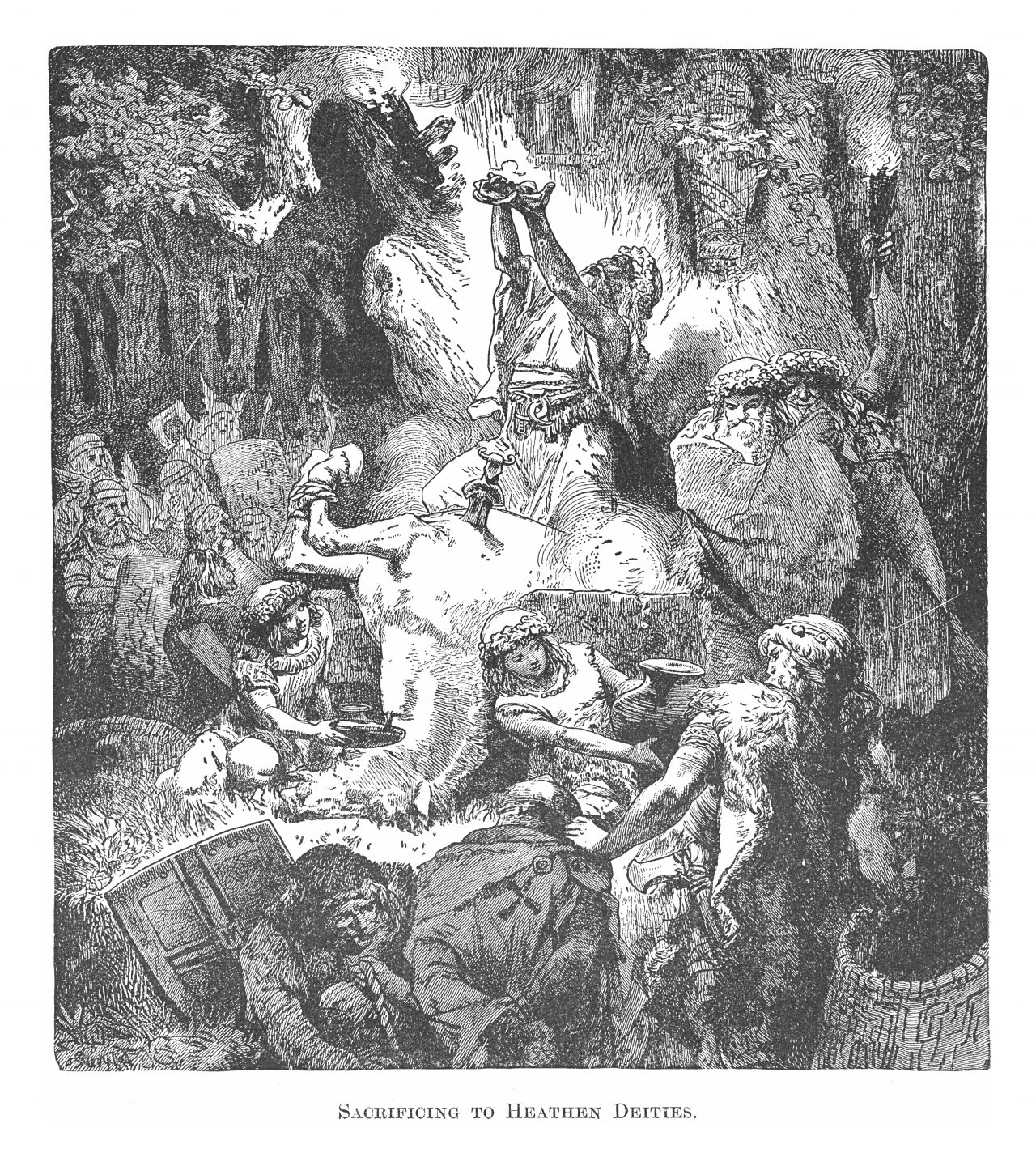
Not brewing beer for Christmas was a criminal offence
Another ritual was to honour and calm the gods by drinking beer, which was considered to be a sacred drink. In ‘Haraldskvadet’ from around the year 900: “Out (at sea) he (the king) wanted to drink Christmas.” To drink Christmas means to celebrate Christmas. This was so important that the law stated that it was obligatory for beer to be brewed for Christmas. If you were to break the law many times, your farm could be taken and given to the king, and the farmer himself could be sent away.
By making sacrifices and drinking to the gods, people were hoping for fertile land, good crops and peace.
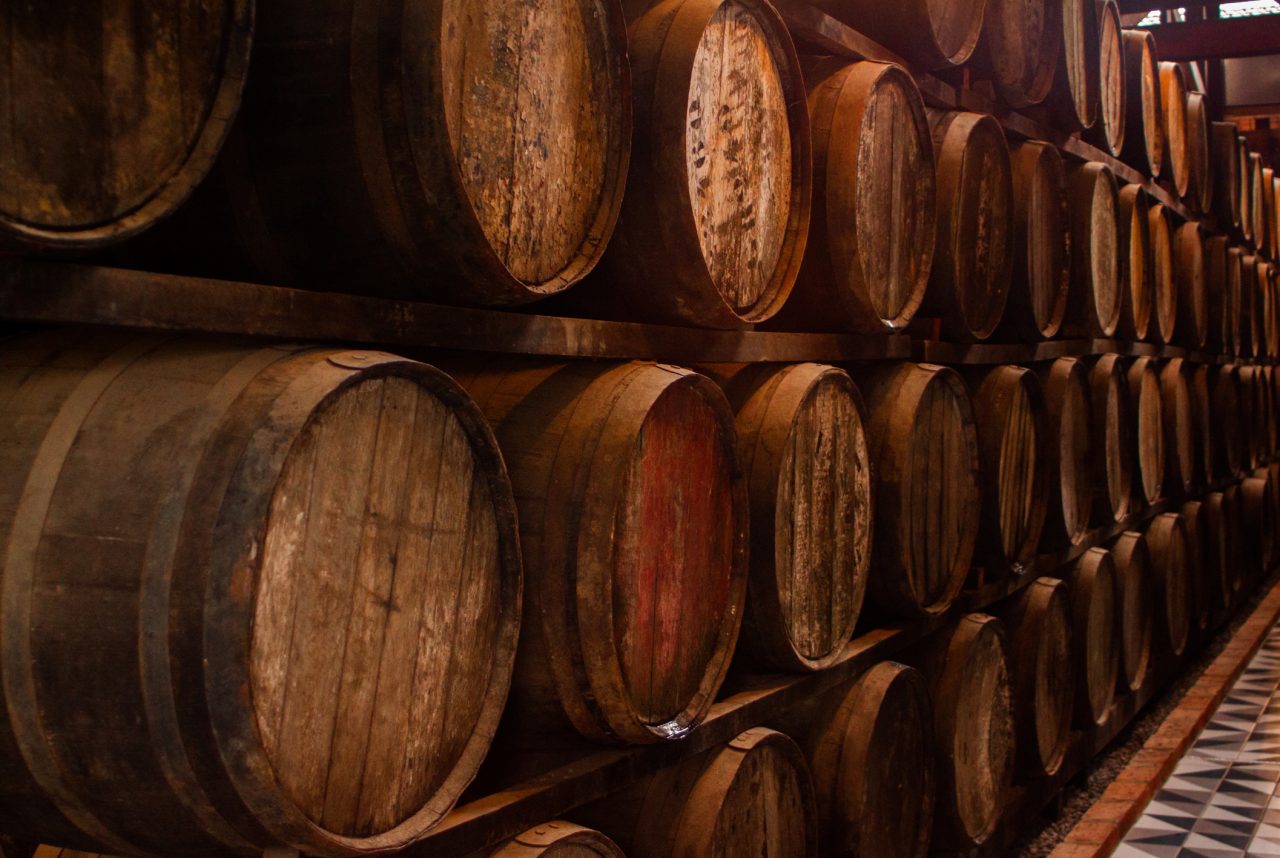
Oppbevaring av drikke i tretønner stablet opp på hverandre
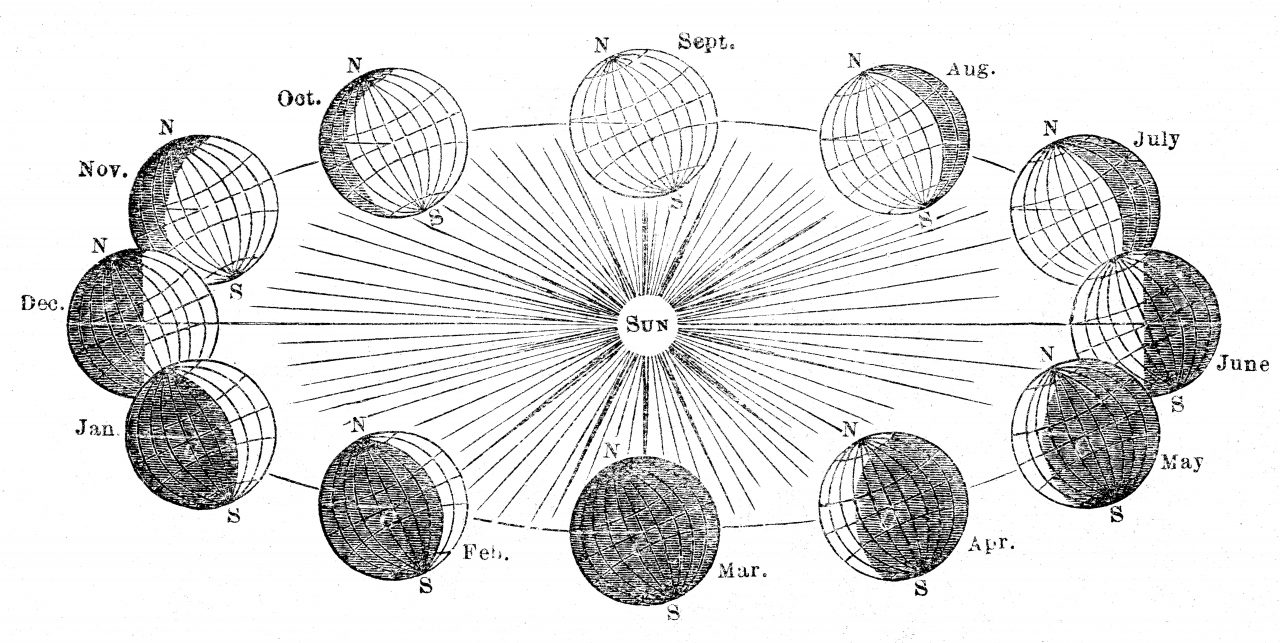
Illustrasjon av solverv 1881
The Roman sun God
The Roman Empire had long known about Christianity when the Roman emperor Aurelian introduced the cult of Sol Invictus as a state religion in the year 274. Emperor Aurelian, who was not a Christian, introduced the cult of the sun to strengthen his power after a series of crises. The emperor became the messenger or holy representative of god. Any attempt to deny him power would be an insult to god. Most cultures have a sun god, and the origins of the Roman one lie in ancient Greece and Persia.
⬅ In some places this god was named Mitra.
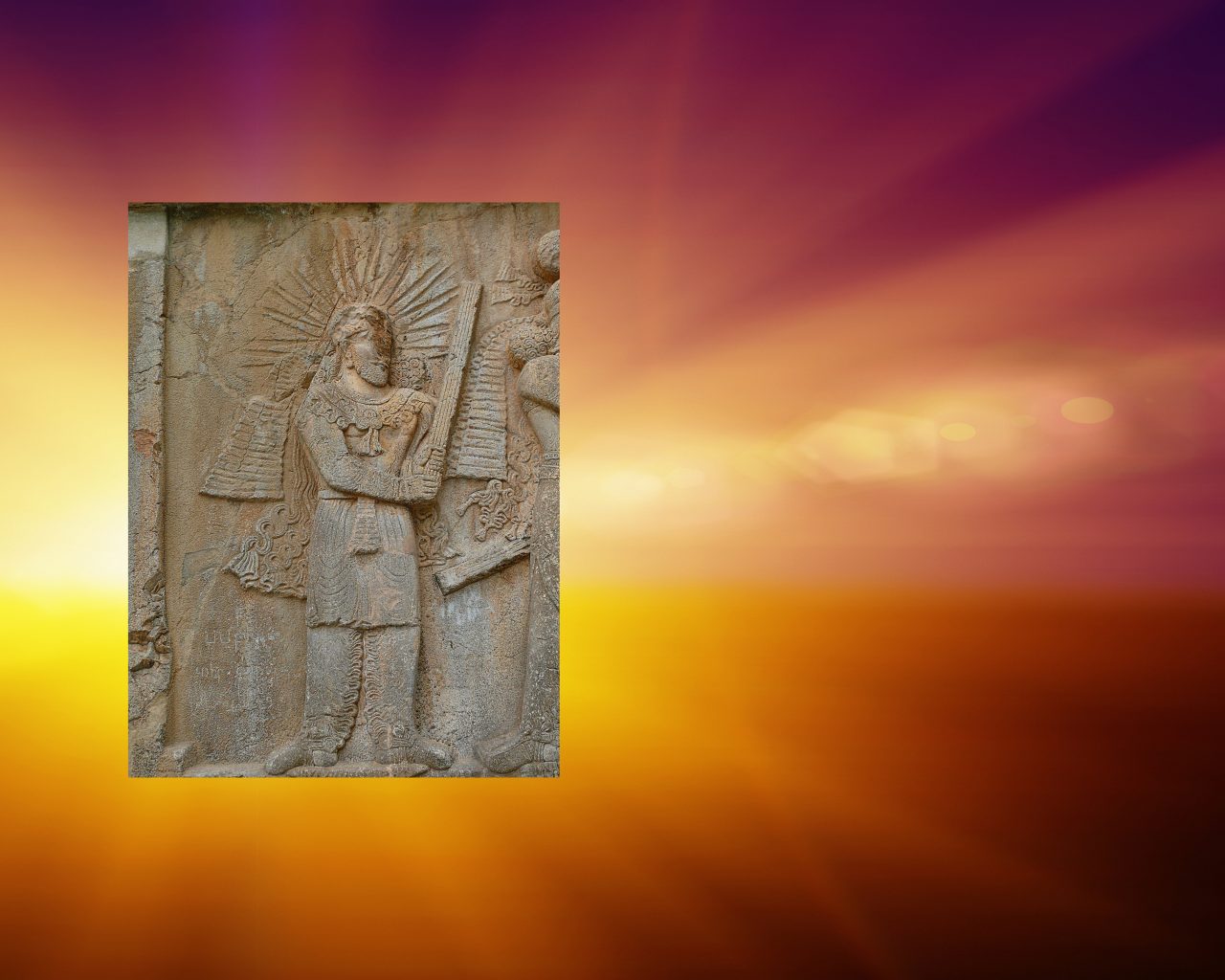
Romerrikets solgud, Mitra
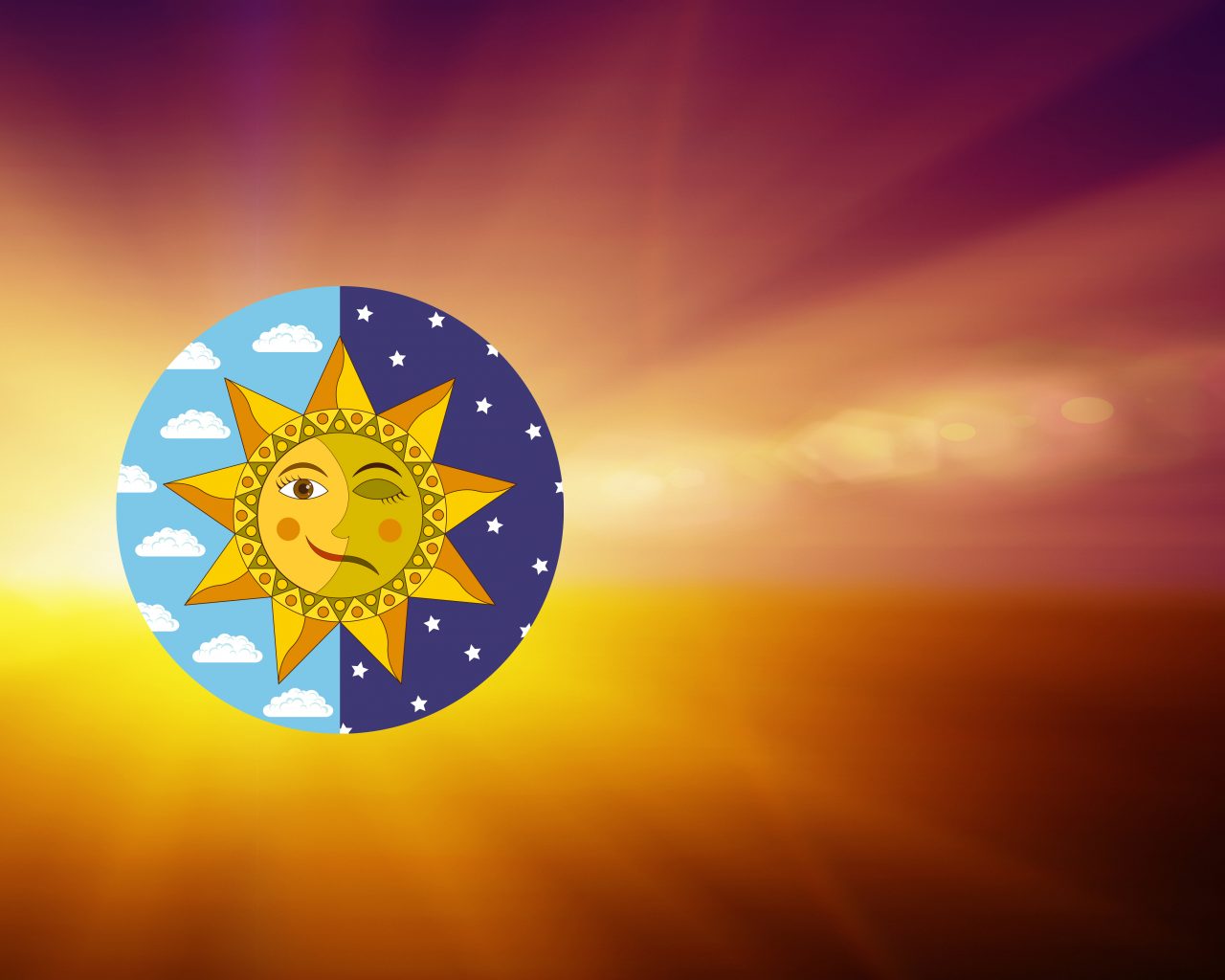
Illustrasjon av Vintersolverv
Christianity becomes the state religion
In the first centuries, a small group of Christians lived alongside the Sol cult in Rome. Emperors became interested in Chritianity from the early fourth century, and in 380 Christianity became the state religion of the Roman Empire. At this point, other religions were banned.
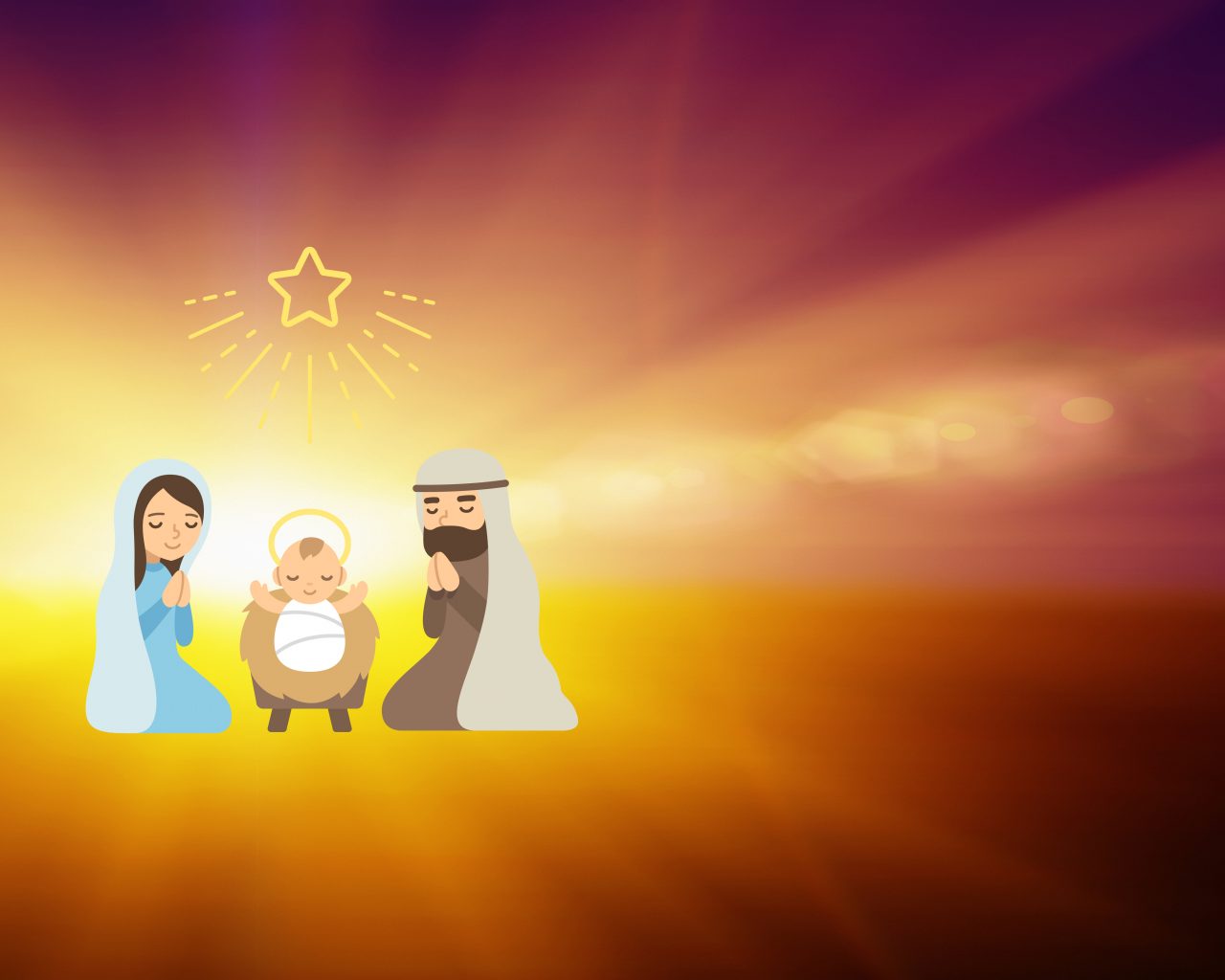
Illustrasjon av Julekrybben
The three wise men
For Christians, the rebirth of Jesus at Easter was the most important holiday. The birth of Jesus was not really celebrated, but the three wise men who brought gifts for baby Jesus were celebrated on January 6th.
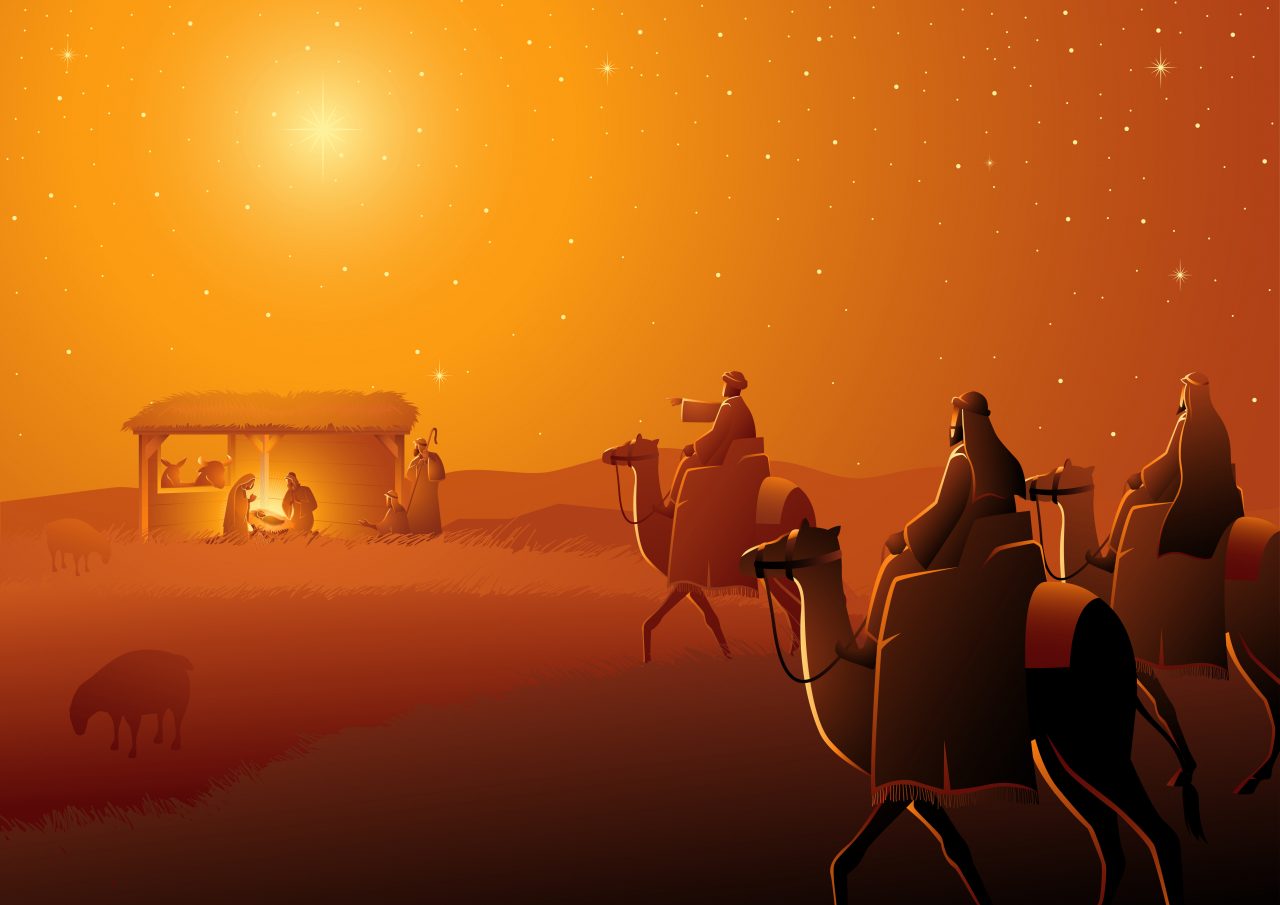
Illustrasjon av De tre vise menn
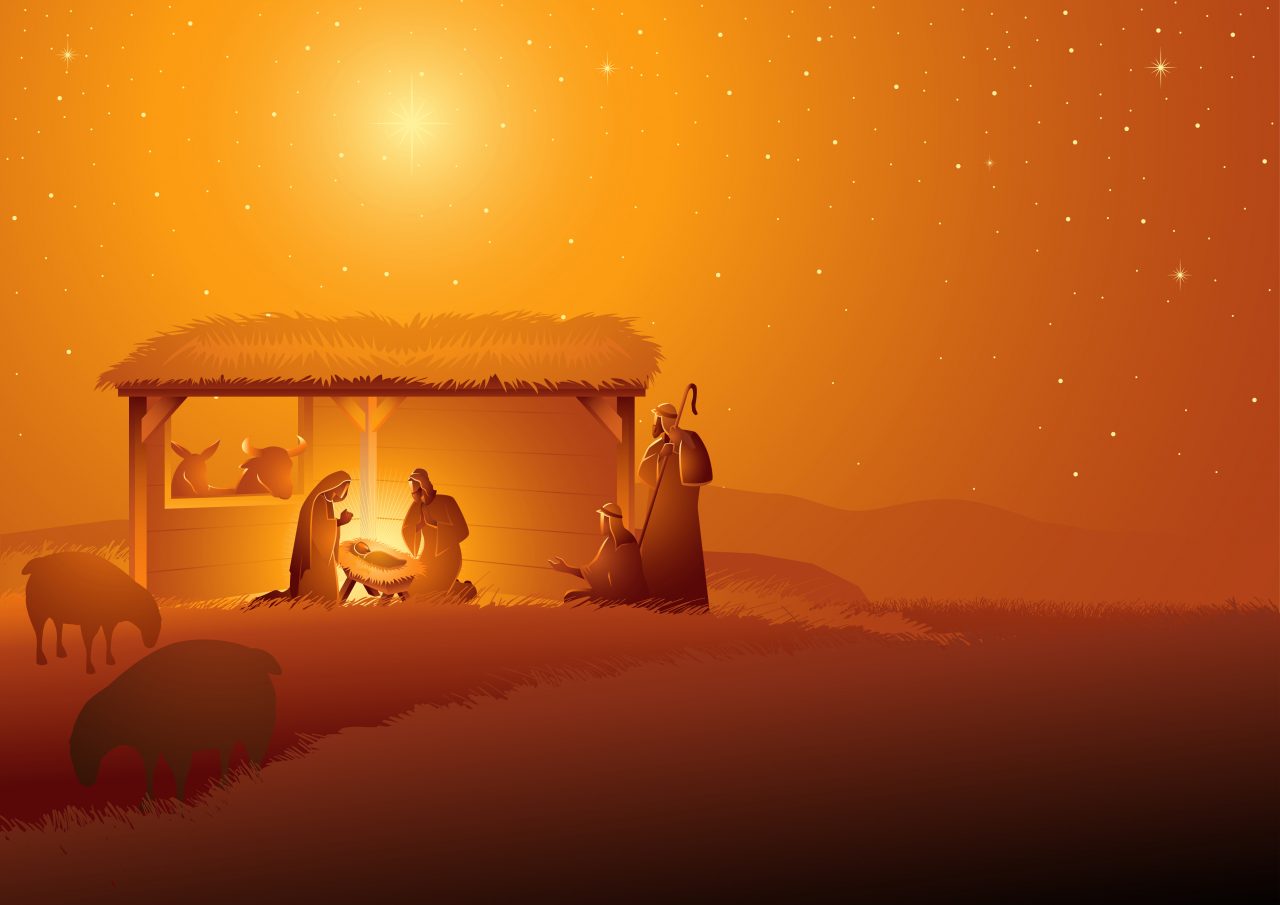
Illustrasjon av Den hellige familien i stall
December 25th becomes the Christian holiday
Around the year 350, Pope Julius I decided that December 25th should be celebrated as the birthday of Jesus. This was the same date as the previously popular sun god was celebrated. This is how Christian content was added to an old holiday.
Several hundred years would pass from the start of the Roman Empire celebrating Christmas before this tradition would reach Norway and the Nordic countries. You can read more about this in the article ‘Christmas comes to Norway’
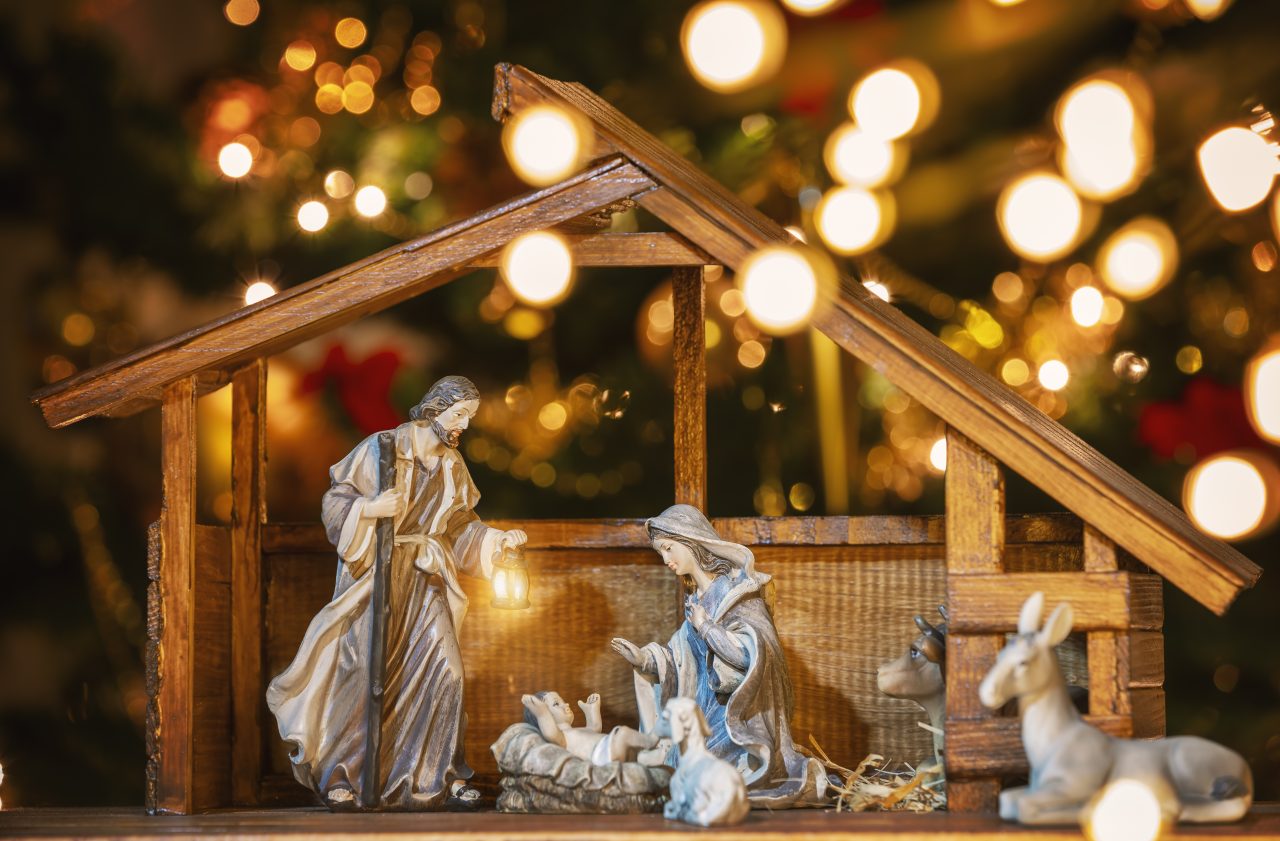
Bilde av figurer som skal forestille Julekrybben
The origin of Christmas – a cartoon
Sources:
- Historien om Jesus og hans samtid (2020)
Orage Forlag AS
- uit.no (13.11.2020): Når begynte nordmenn å feire jul?
https://uit.no/nyheter/artikkel?p_document_id=398207
- Forskning.no (13.11.2020): Gleðileg jól
https://forskning.no/jul-sprak/gleileg-jl/945493
- human.no (13.11.2020): Juletradisjoner og julens historie
https://human.no/artikler/jul-og-julefeiring/julens-historie/
- historienet.no (13.11.2020): Vikingenes jul var preget av alkohol
https://historienet.no/sivilisasjoner/vikinger/vikingenes-jul-var-preget-av-alkohol
- imperiumromanum.edu.pl (13.11.2020):
https://www.imperiumromanum.edu.pl/en/roman-religion/gods-of-ancient-rome/list-of-roman-gods/sol-invictus/
- Fjordtours.com (10.11.22): Viking Christmas
https://www.fjordtours.com/inspiration/articles/viking-christmas/#:~:text=Every%20December%20the%20Vikings%20would,spirits%20for%2012%20days%20straight.
Media Rights:
-
-
Peter-Nicolai Arbo
-
Getty Images
-
Getty Images
-
Getty Images
-
Getty Images / Dynamosquito (CC BY-SA 2.0)
-
Getty Images
-
Getty Images
-
Getty Images
-
Getty Images
-
Getty Images
-
truTV – YouTube
-


